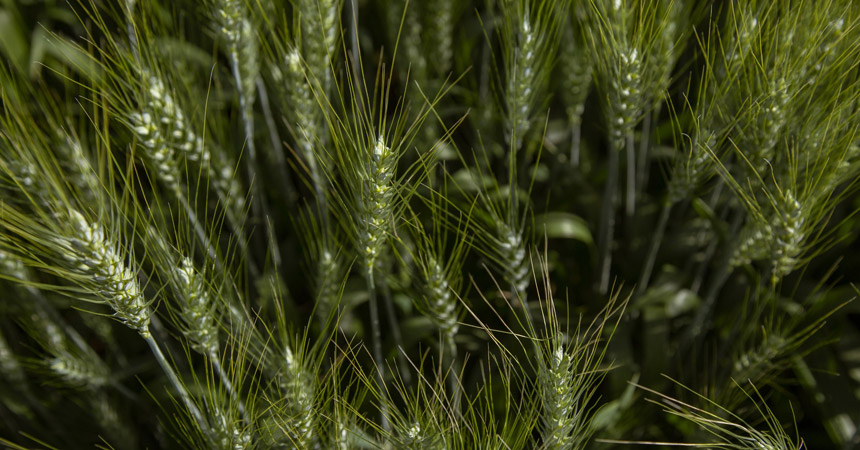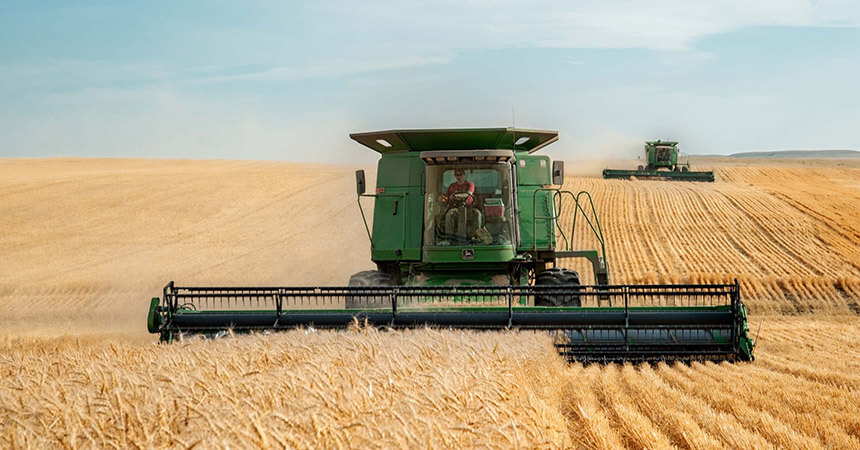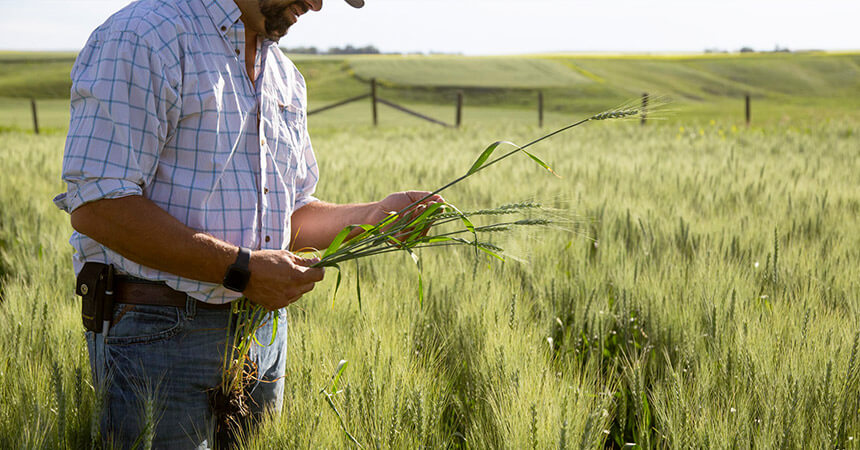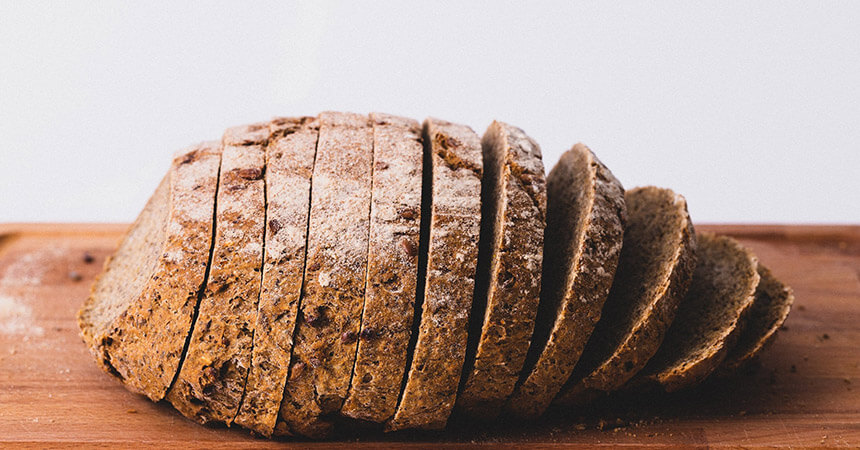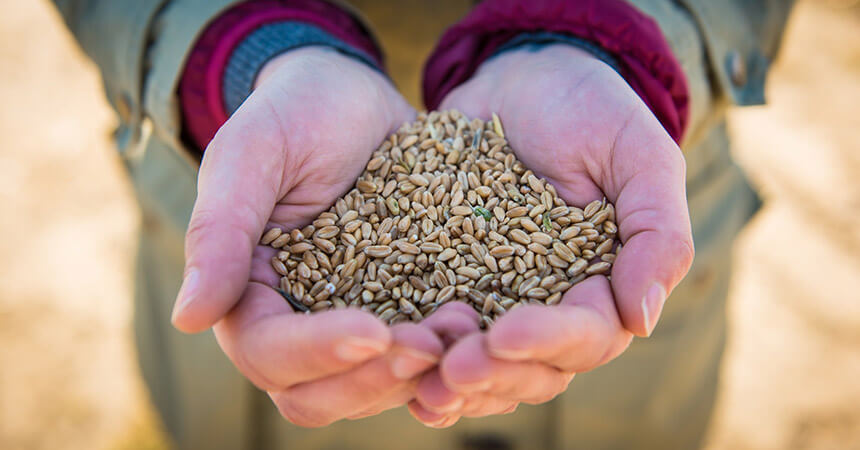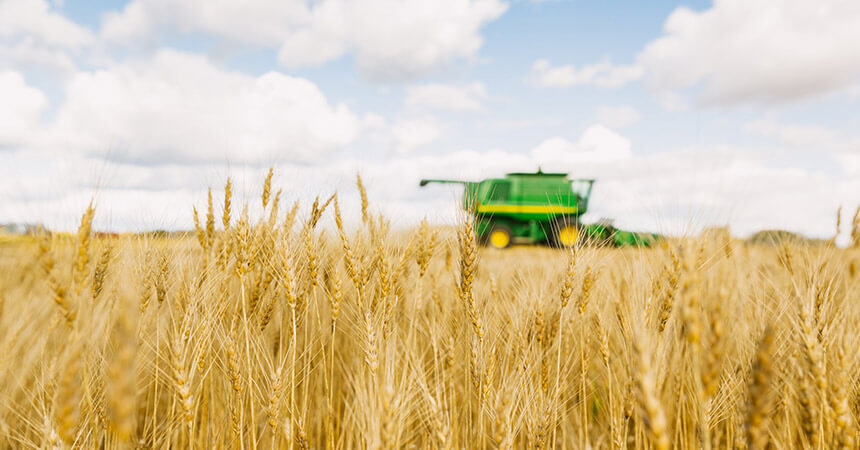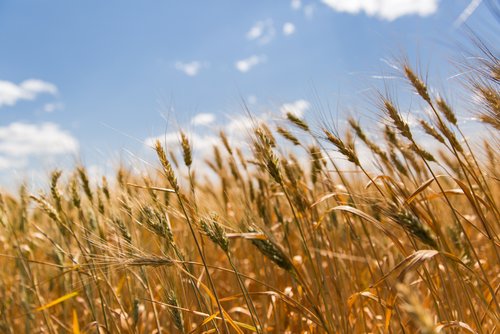La CWRC administrera la nouvelle Grappe nationale du blé, d’une valeur de 20 millions de dollars.
Le 6 mars 2024 (Carman – Man.; Saskatoon – Sask.; Calgary – Alb.;) – Les recherchescanadiennes sur le blé jugées précieuses recevront un financement crucial grâce à la nouvelle Grappe nationale du blé, d’une valeur de plus de 20 millions de dollars sur 5 ans.
La Grappe, administrée par la CWRC, financera les projets de recherche faisant avancer la génétique, les qualités agronomiques et la durabilité du blé, et ce, au profit des agriculteurs du Canada.
« Le blé est une culture vitale dans les rotations des cultivateurs de grain de tout le pays, a déclaré Jake Leguee, président de la CWRC, agriculteur près de Fillmore, en Saskatchewan.
Les investissements en recherche effectués dans le Cadre de la Grappe du blé feront en sorte que le blé reste rentable et durable pour les agriculteurs canadiens.Ils permettront d’améliorer la qualité et les rendements tout en trouvant des solutions aux stresseurs environnementaux comme la sécheresse et les maladies comme la fusariose de l’épi. Depuis des décennies, les agriculteurs n’effectuent qu’un travail minimal du sol et gèrent les nutriments. Les activités financées dans ce cadre amélioreront ces pratiques, ce qui permettra aux agriculteurs de contribuer davantage aux objectifs climatiques du gouvernement du Canada ».
Le député de Winnipeg Nord, Kevin Lamoureux, a annoncé la nouvelle Grappe cet après-midi, au nom de l’honorable Lawrence MacAulay, ministre de l’Agriculture et de l’Agroalimentaire. Plus de 11,2 millions de dollars du financement de la Grappe viendra d’Agriculture et Agroalimentaire Canada (AAC) dans le cadre du programme Agri-science du Partenariat canadien pour une agriculture durable (PCA durable), alors que 9,3 millions seront issus de producteurs et d’organismes privés de tout le Canada, représentés par :
- la Manitoba Crop Alliance (MCA)
- la Saskatchewan Wheat Development Commission (Sask Wheat)
- Alberta Grains
- la Western Grains Research Foundation (Fondation de recherches sur le grain de l’Ouest)
- l’Alliance de recherche sur les cultures commerciales du Canada (ARCCC).
« La réputation du Canada comme producteur de blé de classe mondiale dépend de son réseau de recherche robuste, collaborant d’un océan à l’autre, a déclaré Lori-Ann Kaminski, présidente de la CWRC et directrice du programme de recherche sur les cultures céréalières de la MCA.
Dans la Grappe du blé précédente, nous avions fait de grandes avancées vers des innovations qui offriront des bienfaits tangibles aux cultivateurs de blé canadiens, et ce, pour de nombreuses années. Je crois fermement que la nouvelle Grappe sera un autre succès collaboratif pour toute la chaîne de valeur du blé. »
La CWRC est une collaboration entre la MCA, Sask Wheat et Alberta Grains qui vise à améliorer la rentabilité relative nette du blé pour les agriculteurs de l’Ouest du Canada
-30-
Media Contacts:
Cole Christensen
Communications Manager
Manitoba Crop Alliance
403-589-3529
cole@mbcropalliance.ca
Dallas Carpenter
Communications Manager
Saskatchewan Wheat Development Commission
306-653-7967
dallas.carpenter@saskwheat.ca
Jonathan Anderson
Director, Communications, Marketing & Events
Alberta Grains
403-371-2132
janderson@albertagrains.com
